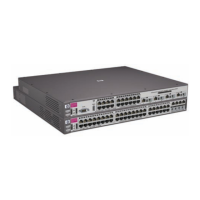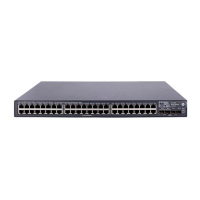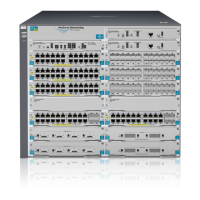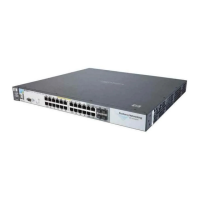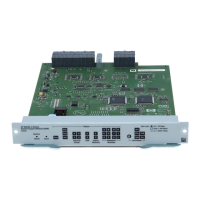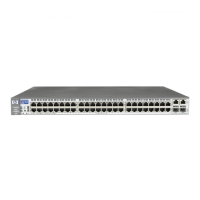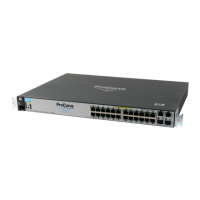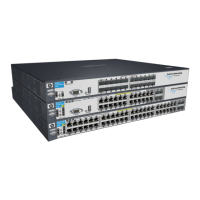IP Routing Features
Configuring OSPF
Note Do not enable redistribution until you have configured the redistribution
filters. Otherwise, the network might get overloaded with routes that you did
not intend to redistribute.
Example: To configure the switch acting as an ASBR to filter out redistribu-
tion of static or connected routes on network 10.0.0.0, enter the following
commands:
HPswitchASBR(config)# router ospf
HPswitch(ospf)# restrict 10.0.0.0 255.0.0.0
HPswitch(ospf)# write memory
Note Redistribution is permitted for all routes by default.
Syntax: restrict < ip-addr > < ip-mask > | < ip-addr/< prefix length >
This command prevents any routes with a destination address that is included
in the range specified by the address/mask pair from being redistributed by
OSPF.
Modifying Default Metric for Redistribution
The default metric is a global parameter that specifies the cost applied to all
OSPF routes by default. The default value is 10. You can assign a cost from 1
– 16,777,215.
Example: To assign a default metric of 4 to all routes imported into OSPF,
enter the following commands:
HPswitch(config)# router ospf
HPswitch(ospf)# default-metric 4
Syntax: default-metric < value >
The < value > can be from 1 – 16,777,215. The default is 10.
11-49

